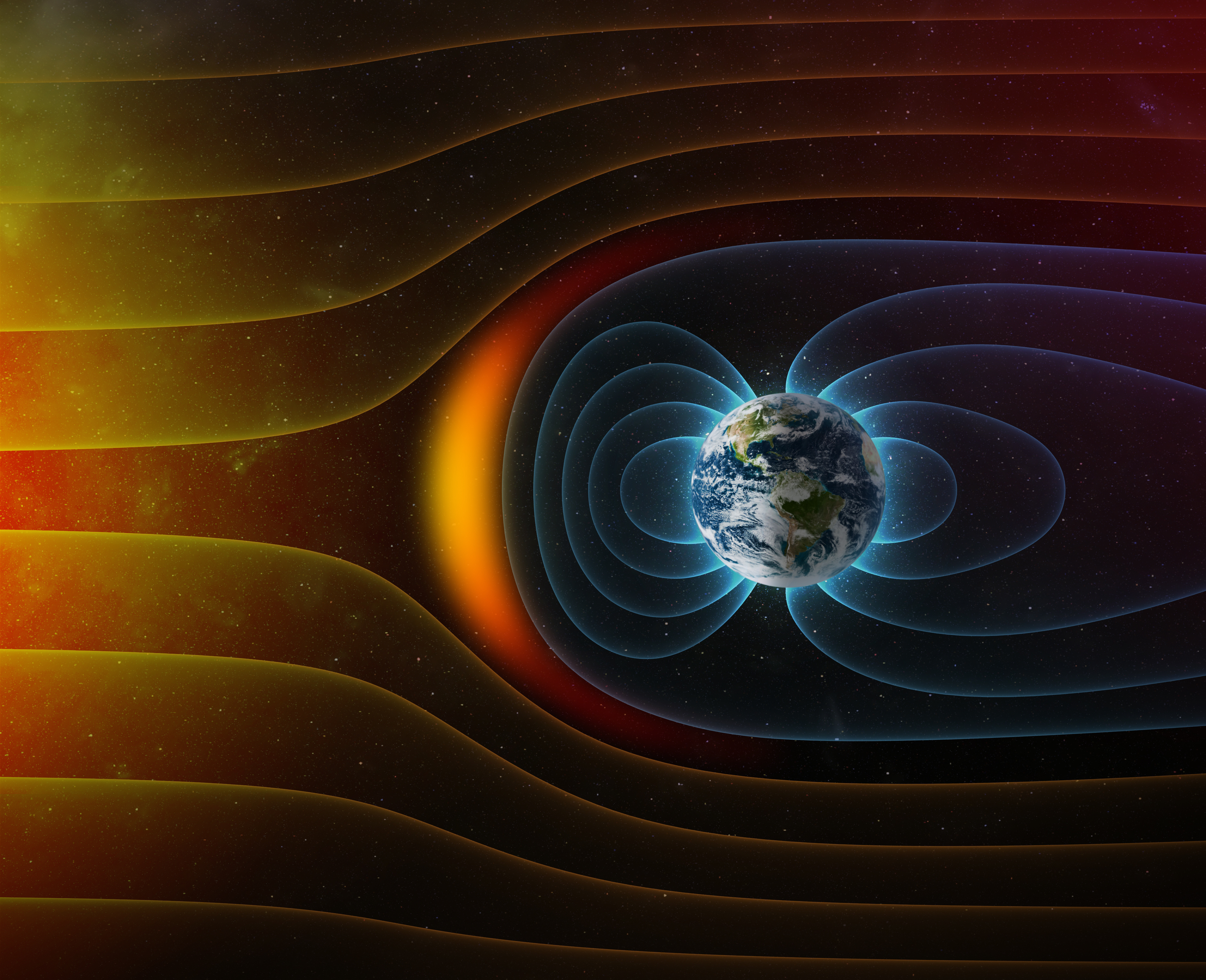You probably see the North Pole as being at the topmost point on our world, in the center. The North Magnetic Pole, however, has really been steadily relocating since it was discovered outside of its original location in the 1830s. Now, according to scientists, we might finally comprehend why it’s moving.
A new study published in the journal Nature Geoscience suggests that the changes in the North Pole’s location are explained by the movement of molten material in Earth’s interior. This, they say, has caused a titanic shift in the planet’s magnetic field. Essentially, the molten iron at the core of our planet helps to determine where Earth’s magnetic field downs down.

A diagram showing how the Earth’s magnetic field points downward and also how it protects from solar radiation. Image source: koya979 / Adobe
It is this exact position that is affected by the movements of the planet’s core. And, as this position changes, so too does the North Pole’s location. Scientists say that the current direction of the pole’s movement is caused by a “blip in the pattern” of the flow inside of the Earth’s interior. This blip, they believe, occurred somewhere between 1970 and 1999.
Because the blip happened, the Canadian field of the North Pole itself has become elongated, losing its influence over the Earth’s magnetosphere. This has caused the North Pole’s location to move quickly towards a magnetic field located under Siberia. The researchers say that our northern magnetic pole is controlled by these two patches, or blobs.

And it’s these blobs that have kept the North Pole’s location in a constant state of tug of war. But, because the Canadian portion of this field has elongated and become weaker, the pole’s location has quickly found itself drawn to the field in Siberia.
Of course, this doesn’t change the physical location of the North Pole, but it could have huge implications for the planet’s magnetic field, which is responsible for keeping the planet’s rotation in order, as well as for protecting against charged solar energy from solar flares and storms. This field is also important for navigation systems like GPS and even the compass.
Source: bgr.com








